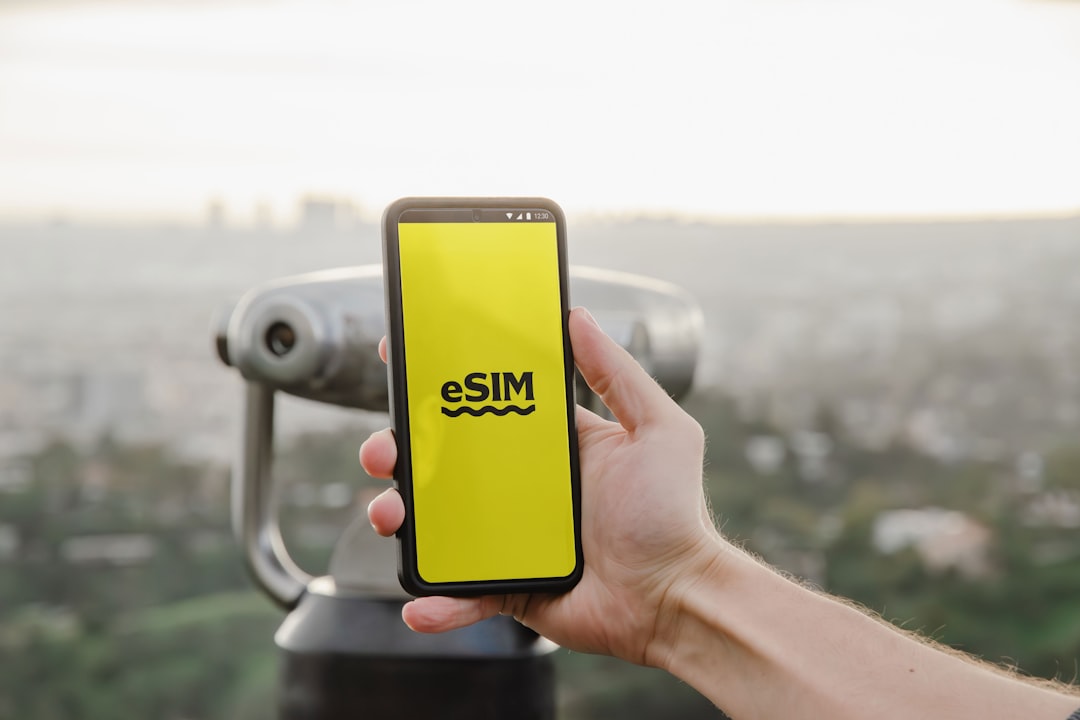City Escapes for Nomads Budget Flights and Local Transit Secrets

Introduction
The modern digital nomad thrives on flexibility, affordability and the thrill of discovering new cultures while keeping a steady workflow. One of the biggest challenges is moving from one city to the next without breaking the bank. While many guides focus on the best coworking spaces or visa requirements, the practical side of getting there – cheap flights and the hidden gems of local transit – often receives far less attention. This article bridges that gap.
We will explore how to hunt down budget flights, decode the transit systems that locals love, and reveal five city escapes that combine low‑cost travel with a high quality of life for remote workers. By the end of this guide you will have a clear roadmap for planning your next move, saving money on transportation, and navigating each destination like a resident rather than a tourist.
Why Budget Flights Matter for Nomads
A digital nomad’s income can be unpredictable. Whether you are paid per project, earn a salary in a different currency, or rely on freelance platforms, keeping travel expenses low directly impacts your ability to stay on the road. Cheap flights provide three critical benefits:
- Extended Stays – When the cost of getting to a new city is low, you can afford to stay longer, which often translates into deeper cultural immersion and better work‑life balance.
- Flexibility – Low‑price tickets usually come with a variety of departure dates and routes. This flexibility lets you respond to changing client demands or personal preferences without being locked into a rigid schedule.
- Budget Buffer – Money saved on airfare can be redirected toward better accommodation, higher‑quality coworking spaces, or experiences that enrich your nomadic lifestyle.
How to Find Budget Flights
Finding cheap airfare is part science, part art. Below are proven strategies that work for most nomads.
Use Flight Comparison Engines
Platforms such as Skyscanner, Google Flights, Momondo and Kayak aggregate fares from dozens of airlines and online travel agencies. To get the best results:
- Set the “Everywhere” destination option when you have no fixed city in mind. This reveals the cheapest places you can fly to from your current airport.
- Use the “Cheapest month” feature to spot the most affordable travel windows.
- Turn on price alerts for routes you are interested in; you will receive an email when the fare drops.
Embrace Flexible Dates and Airports
Most airlines price tickets based on demand for a specific day and time. By being flexible you can capture the low‑demand slots:
- Fly mid‑week – Tuesday and Wednesday are typically the cheapest days.
- Choose early morning or late‑night departures; these flights are less popular and therefore cheaper.
- Consider secondary airports – many cities have smaller airports that serve low‑cost carriers. For example, flying into Kuala Lumpur’s Subang Airport can be far cheaper than the main Kuala Lumpur International Airport.
Book in Advance, but Not Too Early
For most budget carriers, the sweet spot for booking is between 4 and 8 weeks before departure. Booking earlier than that can sometimes lock you into higher fares, while waiting beyond 8 weeks often leads to price spikes as seats fill up.
Leverage Low‑Cost Carriers and Regional Hubs
Low‑cost airlines such as AirAsia, Ryanair, EasyJet, Scoot and Wizz Air dominate short‑haul markets. They often operate out of regional hubs that connect to a wide network of destinations. For instance, using Bangkok’s Don Mueang Airport as a hub can give you cheap connections to many Southeast Asian cities.
Use Airline Loyalty Programs Wisely
Even if you do not travel often enough to earn elite status, signing up for frequent‑flyer programs can still yield benefits:
- Free seat upgrades or extra baggage allowance – both of which can improve your travel experience without extra cost.
- Access to exclusive fare sales that are only visible to members.
Combine Flights with Alternative Transport
Sometimes the cheapest “flight” is actually a combination of a short flight plus a train or bus. For example, flying into Prague and then taking a bus to Bratislava can be cheaper than a direct flight to Bratislava.
Keep an Eye on Error Fares
Airlines occasionally publish fares that are far below market value due to technical glitches. Websites such as SecretFlying and The Flight Deal track these anomalies. When you spot an error fare, book immediately – the price often reverts within hours.
Local Transit Secrets: Moving Like a Local
Once you land, the next challenge is navigating the city efficiently and affordably. Public transit systems are usually the cheapest way to get around, but they can be confusing for newcomers. Below we break down the key tips that apply across most cities, then dive into specific city guides.
Get a Transit Pass
Most urban areas offer daily, weekly or monthly passes that provide unlimited rides on buses, trams, metros and sometimes even ferries. These passes are almost always cheaper than buying single tickets if you plan to travel more than a couple of times a day.
Use Mobile Apps for Real‑Time Information
Apps such as Citymapper, Moovit, Google Maps and local transit apps give you live arrival times, route suggestions and fare calculations. They often include the option to purchase tickets directly within the app, saving you the hassle of buying paper tickets.
Purchase Contactless or Smart Cards
Many cities have reusable smart cards (e.g., London’s Oyster card, Berlin’s BVG ticket, Bangkok’s Rabbit card). Load credit onto the card and tap on and off; the system automatically deducts the correct fare and applies any transfer discounts.
Understand Transfer Rules
In several systems, you can transfer between bus, tram and metro within a set time window for free or at a reduced rate. Knowing these windows can cut your daily cost dramatically. For example, in Madrid a single ticket is valid for a 90‑minute window across all public transport modes.
Avoid Tourist‑Focused Transport
Tourist buses and water taxis often have inflated fares. Opt for the regular commuter routes – they are faster, more frequent and far cheaper.
Learn the Language Basics for Transit
Even a few words can make a big difference:
- “Where is the nearest metro station?” – “¿Dónde está la estación de metro más cercana?” (Spanish)
- “Ticket” – “Billet” (French)
- “How much for a single ride?” – “Wie viel kostet eine Einzelfahrt?” (German)
A polite attempt at the local language often earns helpful locals who can point you to shortcuts or less‑known routes.
Night Transport Options
Many cities reduce or stop public transport after midnight. Knowing the night bus routes or shared‑ride services (e.g., Uber, Lyft, Grab) can keep you safe and save you from pricey taxis.
City Escape Guides
Below are five cities that combine affordable flights, robust local transit, and a thriving nomad community. Each section covers flight tips, accommodation options, coworking spaces, cost of living estimates, and the hidden transit secrets that will keep your daily commute under $5.
Lisbon, Portugal
Getting There
Lisbon’s Humberto Delgado Airport (LIS) is a major hub for low‑cost carriers from Europe and North Africa. To keep the flight cheap:
- Fly from London Gatwick with easyJet – tickets often drop below €30 when booked 5‑7 weeks ahead.
- Use the “multi‑city” search on Skyscanner to combine a cheap flight into Madrid and a Ryanair hop to Lisbon – sometimes the combined price is lower than a direct ticket.
Accommodation & Coworking
- Accommodation – Neighborhoods such as Alfama, Graça and Campo de Ourique offer studios and shared apartments ranging from €450‑€650 per month. Staying slightly outside the city centre (e.g., in Amadora) can shave €100 off your rent while still being a 15‑minute metro ride away.
- Coworking – Heden, Second Home Lisbon, and Avila Spaces provide fast Wi‑Fi, ergonomic chairs and a community of fellow nomads. Day passes start at €12, while monthly memberships are around €150.
Cost of Living Snapshot
- Food (groceries): €200‑€250 per month
- Eating out (mid‑range): €10‑€15 per meal
- Transportation (monthly pass): €40
Local Transit Secrets
- Viva Viagem Card – Purchase this rechargeable card for €0.50, load a 24‑hour ticket (€6.40) or a 30‑day pass (€40). The card works on metros, trams, buses, and even some regional trains.
- Tram 28 Shortcut – While Tram 28 is a tourist favorite, it can be extremely crowded. Instead, hop on the less‑known Tram 12 or 15 for a similar scenic route with fewer tourists.
- Bike‑Sharing – Lisbon’s Gira bike‑share system offers a free first 30 minutes, then €0.15 per extra minute. Dock the bike at any of the 200 stations across the city.
- Night Buses – The “Noite” night bus network (routes 701‑706) runs every hour from 12 am to 5 am, covering the main districts at a flat fare of €1.50.
Insider Tip
Purchase a “Lisbon Card” if you plan to explore attractions. It includes unlimited public transport and free entry to many museums for 24, 48 or 72 hours – a great value for the culturally curious nomad.
Medellín, Colombia
Getting There
Medellín’s José María Córdova International Airport (MDE) is served by budget airlines from the United States, Canada and Latin America. Cheap flight strategies:
- Fly from Miami with Spirit or JetBlue – sales often bring round‑trip fares under $200 when booked 6‑8 weeks ahead.
- Check “flexible dates” on Google Flights and look for “cheapest month” – typically September and October.
Accommodation & Coworking
- Accommodation – El Poblado and Laureles are the most popular neighborhoods for nomads. A one‑bedroom apartment in El Poblado averages $600‑$800 per month, while Laureles can be found for $450‑$650.
- Coworking – Selina Co‑Work, Atom House, and Tinkko provide reliable internet, coffee, and community events. Day passes start at $10, monthly memberships around $120.
Cost of Living Snapshot
- Groceries: $150‑$200 per month
- Eating out (local restaurants): $5‑$8 per meal
- Transportation (monthly pass): $30
Local Transit Secrets
- Metro System – Medellín’s metro is clean, safe and fully integrated with cable cars (Metrocable). Purchase a “Cívica” smart card for $1 and load a 30‑day pass for $30, covering metro, buses and cable cars.
- Cable Car Shortcut – The Metrocable line to Santo Domingo offers stunning views and connects directly to the metro line L. It’s faster than taking a bus up the steep hills.
- Bicycle Lanes – The city has an expanding network of protected bike lanes. Use the “BiciMad” bike‑share app to locate docking stations; the first 30 minutes are free, then $0.20 per additional minute.
- Night Transport – The “Noche” night buses operate on major avenues after 11 pm, with a flat fare of $0.70.
Insider Tip
Take advantage of the “Metro de Medellín App” which offers real‑time arrivals and a QR code ticket option. It eliminates the need for a physical card and works on both Android and iOS.
Chiang Mai, Thailand
Getting There
Chiang Mai International Airport (CNX) receives numerous low‑cost flights from Bangkok, Kuala Lumpur and Singapore. Budget flight tactics:
- Fly Bangkok‑Chiang Mai with Thai AirAsia – tickets as low as $30 when booked 3‑5 weeks ahead.
- Use the “multi‑city” feature on Momondo to combine a cheap flight into Bangkok and a separate AirAsia ticket to Chiang Mai – often cheaper than a direct flight from your home country.
Accommodation & Coworking
- Accommodation – The Old City and Nimman neighborhoods are popular. A one‑bedroom apartment in Nimman costs $350‑$500 per month, while a guesthouse in the Old City can be rented for $250‑$350.
- Coworking – Punspace, CAMP and Mana Coworking are the top spots. Day passes start at $5, monthly memberships around $80.
Cost of Living Snapshot
- Groceries: $150‑$200 per month
- Eating out (street food): $1‑$2 per dish
- Transportation (monthly pass): $30
Local Transit Secrets
- Songthaew System – These red pickup trucks act as shared taxis. A ride within the city costs $0.50‑$1.00. They follow fixed routes but can be flagged down anywhere.
- Rideshare Apps – Grab and GoJek are widely used. They offer promotional codes for first‑time users that can reduce rides to $0.80.
- Bicycle Rental – The “Chiang Mai Bike Rental” shop near the Night Bazaar rents bicycles for $3 per day. The city’s flat terrain makes cycling an efficient way to explore.
- Free City Bus – The “City Bus” (routes 1, 2 and 3) is free for tourists with a valid passport. It connects the Old City, the university area and the airport.
Insider Tip
Purchase a “Chiang Mai Smart Card” at the Tourist Information Center. Load it with $10 and you can ride any songthaew, city bus, or tuk‑tuk for a discounted fare of $0.30 per trip.
Tbilisi, Georgia
Getting There
Tbilisi International Airport (TBS) has become a hotspot for budget airlines from Europe and the Middle East. Cheap flight suggestions:
- Fly from Istanbul with Pegasus Airlines – tickets often fall below €40 when booked 4‑6 weeks ahead.
- Look for “open‑jaw” tickets that fly into Tbilisi and out of Batumi; the price difference can be substantial due to airline pricing quirks.
Accommodation & Coworking
- Accommodation – The Vake and Old Town districts offer a range of studios and shared apartments. Monthly rent for a one‑bedroom in Vake averages $350‑$500.
- Coworking – Impact Hub Tbilisi, Terminal and Work on the Rocks provide high‑speed internet, coffee, and networking events. Day passes start at $10, monthly memberships around $130.
Cost of Living Snapshot
- Groceries: $150‑$200 per month
- Eating out (local cuisine): $5‑$8 per meal
- Transportation (monthly pass): $25
Local Transit Secrets
- Metro Card – “Metromoney” – Purchase a reusable card for 50 lari and load a 30‑day pass for 70 lari (≈$25). It works on both metro lines and city buses.
- Free Bus Service – Tbilisi offers a free bus network on certain routes (e.g., bus 31 and 32) that connect the city centre with peripheral neighborhoods. No card required – just board and ride.
- Cable Car to Narikala – The aerial tram to the Narikala Fortress is included in the metro ticket. It provides a quick and scenic ascent from the Old Town.
- Night Trams – Trams 1 and 2 run until 2 am on weekends, offering a cheap alternative to taxis after dark.
Insider Tip
Download the “Tbilisi Transport” app, which integrates metro, bus, and taxi services. It shows the exact fare in Georgian lari and allows you to purchase tickets directly, eliminating the need for cash.
Budapest, Hungary
Getting There
Budapest Ferenc Liszt International Airport (BUD) is a major hub for low‑cost carriers from across Europe. Flight‑saving methods:
- Fly from London Stansted with Ryanair – tickets as low as €15 during flash sales.
- Use the “nearby airports” filter on Skyscanner to compare flights into Vienna (VIE) and then take a FlixBus to Budapest; the total cost can be lower than a direct flight.
Accommodation & Coworking
- Accommodation – Districts VII (Erzsébetváros) and IX (Ferencváros) are favored by nomads. A one‑bedroom apartment costs $600‑$800 per month, while a room in a shared flat can be found for $400‑$550.
- Coworking – Kaptár, Impact Hub Budapest and Loffice offer fast internet, ergonomic chairs, and community events. Day passes start at €12, monthly memberships around €150.
Cost of Living Snapshot
- Groceries: €180‑€250 per month
- Eating out (mid‑range): €8‑€12 per meal
- Transportation (monthly pass): €30
Local Transit Secrets
- Budapest Travel Card – Purchase a “Budapest Card” for 72 hours (€35) or a monthly travel card (€30). It gives unlimited rides on metros, trams, buses, and the suburban railway (HÉV).
- Tram Line 2 Shortcut – While line 2 is popular for its scenic Danube views, the lesser‑known line 4/6 runs parallel and is less crowded, providing the same stops at a faster pace.
- Bicycle Rental – “MOL Bubi” – The city’s bike‑share program offers the first 30 minutes free, then €0.15 per additional minute. Docking stations are plentiful along the riverbanks.
- Night Bus “Night Line 922” – Operates every hour after midnight, connecting the city centre with the suburbs for €1.50.
Insider Tip
If you plan to stay longer than a week, consider buying a “Budapest Card Plus” which adds free entry to museums, thermal baths and public transport. The combined savings on attractions quickly offset the higher upfront cost.
General Money‑Saving Tips for Nomads on the Move
- Travel Light – Low‑cost airlines charge heavily for checked bags. Pack a versatile capsule wardrobe and use compression bags to fit everything into a carry‑on.
- Book Accommodation Near Transit Hubs – Staying within a 5‑minute walk of a metro or tram station eliminates daily commute costs and saves time.
- Leverage Remote Work Stipends – Some companies offer a “home‑office allowance” that can be used for coworking memberships or internet upgrades.
- Cook Occasionally – Buying groceries and preparing meals a few times a week cuts food expenses dramatically, especially in cities where dining out is cheap but not always healthy.
- Use Cashback and Travel Reward Credit Cards – Cards that give 2‑3 % cash back on travel purchases can offset flight and transit costs over time.
Safety and Reliability When Using Public Transit
While public transport is generally safe in the highlighted cities, a few universal precautions are worth noting:
- Keep your valuables in a front pocket or a hidden money belt.
- Avoid empty train cars late at night; opt for those with more passengers.
- Have a backup payment method (e.g., a second credit card or cash) in case your transit card malfunctions.
- Download offline maps of the transit network; internet connectivity can be spotty in underground stations.
Planning Your Next City Escape
- Set a Budget – Determine how much you can spend on flights, accommodation and daily expenses.
- Choose a Destination – Use the “Everywhere” search on a flight aggregator to see which city offers the cheapest airfare from your current location.
- Check Visa Requirements – Many countries offer digital nomad visas or visa‑free stays for up to 90 days.
- Book the Flight – Follow the budget flight strategies outlined above.
- Secure Accommodation Near Transit – Book a place that is within walking distance of a metro or tram station.
- Get a Local Transit Card – Purchase the city’s smart card on arrival and load a monthly pass.
- Explore Coworking Options – Sign up for a trial day to test the environment before committing to a monthly plan.
By following this systematic approach, you transform the intimidating process of moving between cities into a repeatable, cost‑effective routine.
Conclusion
The freedom to work from anywhere is one of the most rewarding aspects of the digital nomad lifestyle. Yet, the true power of that freedom lies in mastering the logistics of travel – finding budget flights, decoding local transit, and selecting cities that support a sustainable work‑life balance.
Lisbon, Medellín, Chiang Mai, Tbilisi and Budapest each offer a unique blend of affordable air connections, efficient public transportation, and thriving nomad communities. By applying the flight‑hunting techniques, transit hacks and budgeting strategies discussed in this guide, you can keep your travel costs low while immersing yourself fully in each new environment.
Remember, the best city escape is the one that aligns with your work rhythm, personal interests and financial parameters. Use the tools and insights here to craft a travel plan that lets you explore the world, stay productive, and keep your wallet happy. Safe travels and happy nomading!
Random Posts

Essential Finance Tips for the Global Freelancer
Learn how global freelancers can master multi-currency payments, tax residency rules, and smart budgeting while hopping between coworking hubs, so you keep more of what you earn.
2 weeks ago

Essential Tools for High Performance Remote Work
Discover the must have tools that turn remote work into high performance, from messaging and video to project management, security and productivity, with tips to integrate them smoothly into any workflow.
4 days ago

Mastering Remote Work Productivity and Finding Top Digital Nomad Jobs
Unlock the secrets to thriving remotely with proven productivity frameworks, essential tools, and step by step tactics to land top digital nomad jobs and boost your freedom focused career.
2 weeks ago

Smart Packing Hacks for Long Term Travel
Learn to pack light for months of travel by shifting your mindset, choosing multi-use items, and planning on-the-go replacements. These practical hacks turn bulky baggage into a flexible, organized system so you can focus on the adventure
3 weeks ago

Mastering Nomad Taxes and Residency Strategies
Learn how to pinpoint your tax residency, dodge double taxation, and choose the friendliest jurisdictions so you can travel freely while keeping your finances compliant and optimized
2 months ago
Latest Posts

Essential Software Every Remote Professional Should Use
Master remote work with essential tools: instant messaging like Slack, high definition video calls such as Zoom, and asynchronous voice apps. Streamline communication, stay connected and boost productivity.
1 day ago

Mastering Remote Work Productivity for Digital Nomads and Freelancers
Learn proven habits, tools, and tactics that help digital nomads and freelancers stay focused, deliver quality work, and maintain a sustainable lifestyle while traveling the world.
1 day ago

Tech‑Friendly European Towns Perfect for Remote Living
Discover Europe’s best small towns where fast internet, affordable living and vibrant tech communities let you work remotely while soaking up historic charm, lakeside views or mountain air.
1 day ago